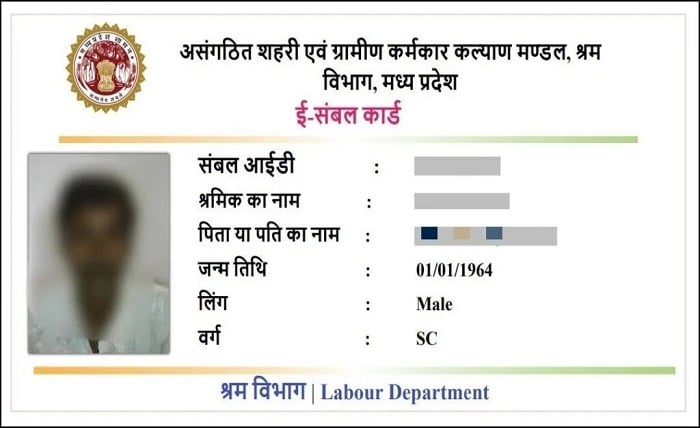Sambal Card: Everything You Need to Know About Indonesia’s Social Welfare Card

What is a Sambal Card and Why It Matters
The Sambal Card is a government-issued social welfare card in Indonesia designed to assist low-income families by offering financial aid, healthcare benefits, education support, and access to essential social services. Introduced as part of Indonesia’s broader poverty alleviation programs, the Sambal Card plays a crucial role in helping citizens meet their basic needs. As the country continues to work toward inclusive economic growth, the Sambal Card remains a vital component in bridging the gap between various socio-economic groups.
The concept behind the Sambal Card is to empower underprivileged families with access to basic necessities that would otherwise be financially out of reach. From food assistance to school support, the Sambal Card ensures that no one is left behind in Indonesia’s development journey.
Eligibility Criteria for Sambal Card in Indonesia
Understanding who can receive a Sambal Card is essential for those interested in benefiting from the program. The eligibility for the Sambal Card is based primarily on income level, employment status, and household composition. Applicants must be citizens of Indonesia and belong to the lower-income category as defined by the government’s poverty database.
The Sambal Card is targeted toward individuals who are unemployed, elderly, single parents, or families with children needing education and healthcare support. To ensure that the Sambal Card reaches the right people, the government cross-verifies data using national identification systems and local surveys. The idea is to deliver real help to those who need it most via the Sambal Card.
How to Apply for a Sambal Card
Applying for a Sambal Card involves a step-by-step process that is designed to be simple and accessible. To begin the application, residents must visit their local village office or urban administrative center where government officials will guide them through the necessary paperwork for the Sambal Card.
Applicants are required to present documents such as a national ID card (KTP), family card (KK), and proof of income or unemployment. Once submitted, the application for the Sambal Card undergoes verification. The entire process may take a few weeks, but those who are approved will receive their Sambal Card via post or in-person collection from a designated government office.
Additionally, digital applications for the Sambal Card are being rolled out in major cities through mobile apps to ensure broader access and efficiency in distribution.
Benefits and Features of the Sambal Card
The Sambal Card offers a wide array of benefits to its recipients. These include monthly financial assistance, subsidized healthcare through BPJS (Indonesia’s Health Insurance), educational scholarships for school-age children, and discounts on essential commodities like rice, cooking oil, and electricity bills.
One of the most significant advantages of the Sambal Card is its direct cash transfer, which is credited to the cardholder’s account. This cash transfer helps families manage monthly expenses. Moreover, the Sambal Card often comes with additional benefits during festive seasons, natural disasters, or emergencies as announced by the government.
The Sambal Card also empowers women and marginalized communities by offering skill-building workshops and microloans to promote self-reliance.
How the Sambal Card Impacts Indonesian Society
The Sambal Card has had a profound impact on Indonesian society since its implementation. It has helped millions of families overcome the harsh realities of poverty by providing consistent support. The Sambal Card not only helps in financial stability but also contributes to better health, increased school enrollment, and reduced child labor.
A 2023 study showed that households with a Sambal Card had better food security and more frequent access to healthcare services compared to those without one. The Sambal Card has been credited with improving maternal health and reducing malnutrition among children in remote regions.
With growing governmental and community support, the Sambal Card is becoming a symbol of hope and equality for many Indonesians striving for a better life.
Sambal Card vs Other Social Welfare Programs
While the Sambal Card is a major social support program, it is important to compare it with other similar initiatives like the Kartu Indonesia Pintar (Smart Indonesia Card), Kartu Prakerja (Pre-employment Card), and the Kartu Sembako (Basic Food Card). Each program has its own focus, but the Sambal Card stands out because of its holistic approach to social support.
The Sambal Card encompasses multiple benefits—monetary aid, education, and healthcare—making it one of the most comprehensive welfare tools available. In contrast, other programs might focus only on one specific area, such as job training or school funding.
Despite overlapping target groups, the Sambal Card works in tandem with these initiatives to ensure comprehensive coverage and support for Indonesia’s most vulnerable populations.
Future of the Sambal Card in Digital Indonesia
As Indonesia moves toward a more digital and connected future, the Sambal Card is expected to evolve into a more technologically advanced tool. Plans are underway to integrate the Sambal Card with mobile wallets, biometric identification, and blockchain technology to ensure transparency and security.
By digitizing the Sambal Card, the government hopes to reach a broader audience, reduce fraud, and monitor the impact of the benefits more effectively. With an increasing number of services being offered online, having a digital Sambal Card will streamline access to public services.
The modernization of the Sambal Card will further empower users, enabling them to check balances, receive updates, and access educational content from the convenience of their smartphones.
Conclusion
The Sambal Card is not just a plastic card—it is a powerful instrument for change. By offering financial, educational, and healthcare benefits, it uplifts millions of Indonesians from poverty and paves the way toward inclusive growth. With each new development, the Sambal Card continues to prove its relevance and importance in a country striving for equality and economic justice.
As Indonesia progresses into a digital era, the Sambal Card will remain an essential tool for social welfare and national development. The government’s commitment to expanding and improving the Sambal Card program reflects a shared vision of a prosperous, equitable, and supportive society for all.
FAQs
1. What is a Sambal Card used for?
The Sambal Card is used for accessing government-provided financial aid, healthcare, education support, and food subsidies for low-income families.
2. How can I apply for a Sambal Card?
To apply for a Sambal Card, visit your local village office with your KTP, KK, and income documentation, or apply online via designated apps.
3. Who is eligible for the Sambal Card?
Eligibility for the Sambal Card includes being an Indonesian citizen with low income, unemployed status, or family responsibilities such as children or elderly.
4. Can I use the Sambal Card in all regions of Indonesia?
Yes, the Sambal Card is a nationwide program and can be used in all provinces of Indonesia where partner outlets and service providers are available.
5. What benefits does the Sambal Card provide?
The Sambal Card provides cash aid, healthcare access through BPJS, educational scholarships, food discounts, and support during emergencies.




